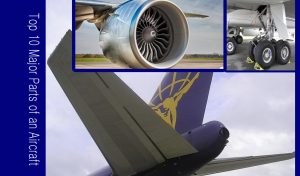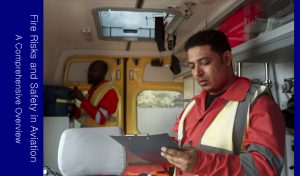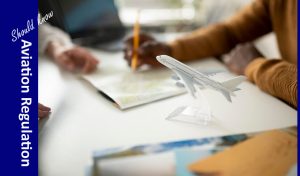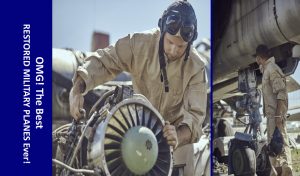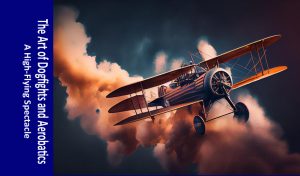There are several stages of flight that can be considered tricky due to the challenges and complexities involved. In the question “Some of the most tricky stages of a flight ?“, The concept of “tricky stages” can be based on factors like the type of aircraft, weather conditions and experience of the pilot etc. Here I am going to explain some commonly recognized tricky stages of a flight.
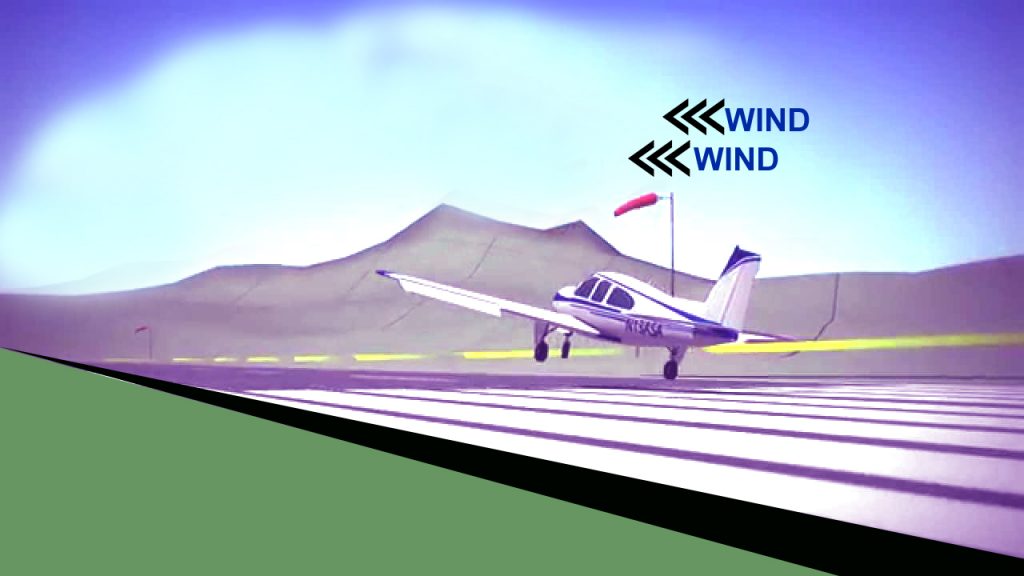
Takeoff and Initial Climb-
Takeoff and initial climb are indeed a number of the most vital and problematic degrees of a flight. These phases require cautious making plans, precise execution, and brief selection-making. Here’s a detailed description of those ranges:
1. Preparation and Briefing: Before takeoff, the flight crew plays a thorough pre-flight briefing. This includes reviewing the plane’s weight and balance, calculating performance information together with V-speeds (V1, VR, V2), and discussing the departure method, such as any unique concerns such as terrain.
2. Taxiing: The aircraft taxis from the gate or parking area to the runway. Taxiing requires particular manipulate and communique with air visitors manage (ATC) to ensure secure motion on the airport surface.
3. Lineup and Takeoff Clearance: The aircraft strains up with the runway and receives takeoff clearance from ATC. The pilots then set the engines to takeoff power and make sure all structures are functioning efficaciously.
4.Takeoff Roll: As the aircraft accelerates down the runway, the pilots display engine performance, airspeed, and other crucial parameters. They should make cut up-2nd selections regarding engine overall performance and any anomalies that can occur for the duration of this phase.
5.Rotation: At the predetermined rotation speed (VR), the pilot-in-command pulls returned on the manage yoke or sidestick to elevate the aircraft’s nostril. This initiates the climb segment. The plane need to rotate easily to achieve the favored climb mind-set.
6.Initial Climb: After rotation, the aircraft enters the initial climb phase. This is where the aircraft profits altitude and hurries up to climb pace (V2). During this section, numerous important elements come into play:
a.Obstacle Clearance: If there are obstacles or terrain inside the departure direction, the pilots should make certain that the plane climbs appropriately above them. This might involve following specific departure methods, which includes a widespread tool departure (SID).
B.Engine Failure: An engine failure throughout takeoff is one of the most tough eventualities. Pilots have to fast assess the situation, determine whether or not to preserve the takeoff or abort it, and follow established strategies to maintain manage and climb overall performance.
C.Weather and Turbulence: Weather conditions, such as wind shear and turbulence, can be especially tough during the preliminary climb. Pilots need to be prepared to make control inputs to maintain balance.
D.Communication and Navigation: The crew have to stay in regular communication with ATC and comply with the planned departure route. Navigation systems must be monitored for accuracy.
E.Traffic Avoidance: In congested airspace, the group need to be vigilant for other plane and follow ATC commands for site visitors avoidance.
7.Positive Rate of Climb: The pilots continuously monitor the plane’s charge of climb, ensuring it remains advantageous (i.E., the plane is mountain climbing, now not descending). They additionally retract the landing equipment and configure the plane for climb.
8.Transition to Cruise: Once the plane has climbed to a safe altitude and cleared any boundaries or terrain, it transitions to the cruise phase. During this section, the aircraft hurries up to its cruising altitude and speed.
The takeoff and initial climb stages require an excessive stage of situational attention, brief choice-making, and the ability to control a couple of tasks concurrently. Pilots depend on their schooling, experience, and communique capabilities to navigate those problematic levels competently. Additionally, present-day aircraft often have advanced structures and automation to assist the team at some stage in those crucial phases
Approach and Landing–
Approach and landing are widely considered among the most tricky and critical stages of a flight. Here’s a concise description of these phases:
Approach:
- During the approach phase, the aircraft descends from its cruising altitude toward the destination airport.
- Pilots must establish the correct descent rate, airspeed, and configuration while following specific approach procedures and air traffic control (ATC) instructions.
- They continuously monitor weather conditions, aircraft systems, and navigation equipment.
- Approach paths can be affected by various factors such as terrain, obstacles, and other air traffic, making precise navigation crucial.
- The crew prepares for the landing by configuring the aircraft for descent, extending landing gear, and setting the flaps to the appropriate positions.
- Vigilance is essential to handle any unexpected challenges, including changes in weather, turbulence, or go-around situations if the approach becomes unstable.
Landing:
- The landing phase begins as the aircraft nears the runway and initiates the descent to touchdown.
- Pilots must execute a precise approach to align the aircraft with the runway centerline and establish the correct descent rate.
- The flare maneuver, just before touchdown, involves smoothly raising the nose to reduce the descent rate and allow the main landing gear to touch down first.
- Landing requires impeccable timing and judgment to ensure a safe, controlled touchdown.
- Factors such as crosswinds, gusty winds, and runway conditions can significantly challenge the landing process, necessitating skilled pilot inputs.
- After landing, the crew must manage the aircraft’s speed, deploy spoilers and reverse thrust if needed, and safely exit the runway to the taxiway.
Approach and landing require outstanding skill, precision, and adaptability from the flight crew. Pilots must account for various variables and potential hazards, making these stages of flight among the most complex and challenging in aviation in the world. Safety and situational awareness are paramount during approach and landing, and any deviations from standard procedures require immediate corrective actions as desire.
Crosswind Landing-
Crosswind landings are considered one of the most challenging aspects of flying, demanding exceptional skill and precision from pilots. Here’s a brief description of crosswind landings:
- Crosswind landings occur when the wind is blowing across the runway rather than directly down it. This can cause the aircraft to drift off course during the approach and landing phases.
- Pilots must use their ailerons and rudder to counteract the sideways force of the crosswind, keeping the aircraft aligned with the runway’s centerline.
- The critical moment in a crosswind landing is the “crab” or “sideways” approach. The aircraft approaches the runway with its nose pointed into the wind to maintain the desired track.
- Just before touchdown, pilots execute a maneuver called “kicking out the crab” or “de-crabbing.” This involves straightening the aircraft’s nose with the runway while keeping the upwind wheel off the ground.
- As the aircraft touches down, the pilot continues to use aileron and rudder inputs to maintain alignment and prevent drifting off the runway.
- Crosswind landings require precise timing and control to ensure a safe and smooth touchdown. If not executed correctly, they can lead to runway excursions or “bounced” landings.
- Factors such as wind speed, gustiness, and the aircraft’s size can increase the complexity of crosswind landings, making them one of the trickiest phases of flight.
- Pilot training includes extensive practice in crosswind landings to develop the skills necessary to handle a wide range of crosswind conditions safely.
Mastering crosswind landings is essential for all commercial pilots, as they often encounter crosswinds at various airports around the world. Proper technique and training are critical to ensuring passengers’ safety and the safe operation of the aircraft during this challenging phase of flight.
Instrument Approaches-
Instrument approaches are indeed one of the trickiest and demanding stages of flight, especially when flying in adverse weather conditions or low visibility. Here’s a concise description of instrument approaches:
- Instrument approaches are procedures followed by pilots to safely descend and align the aircraft with the runway for landing when visibility is limited, often due to poor weather, fog, or low clouds.
- Pilots rely heavily on onboard navigation instruments, radar, and air traffic control instructions rather than visual cues from the outside environment.
- There are various types of instrument approaches, including precision approaches (e.g., ILS – Instrument Landing System) and non-precision approaches (e.g., VOR – VHF Omnidirectional Range or NDB – Non-Directional Beacon approaches).
- Precision approaches provide highly accurate lateral and vertical guidance, while non-precision approaches offer less precise guidance and may require additional steps or altitudes to reach the final approach and landing phase.
- During instrument approaches, pilots must closely monitor and interpret multiple instruments, including the attitude indicator, altimeter, airspeed indicator, heading indicator, and navigation equipment like GPS or VOR.
- Maintaining a stabilized approach, proper descent rates, and a controlled airspeed is crucial for a safe landing.
- Crew coordination and communication are paramount during instrument approaches to ensure that both pilots are fully engaged and aware of the aircraft’s position, altitude, and airspeed.
- Missed approach procedures are predetermined, and if the aircraft cannot land safely at the end of the approach, pilots execute a missed approach to climb away from the airport and await further instructions from air traffic control.Instrument approaches require extensive training and regular practice for pilots to maintain proficiency, as they demand precise navigation and decision-making skills, often in challenging conditions.
Overall, instrument approaches are among the most challenging phases of flight, as they demand a high level of precision, situational awareness, and the ability to adapt to changing conditions while relying primarily on instruments rather than visual cues. Proper training, experience, and adherence to procedures are critical to ensuring safe and successful instrument approaches.
Go-Around-
The go-around, also known as a missed approach, is a critical and potentially tricky phase of a flight. Here’s a concise description of the go-around:
- A go-around is a maneuver performed by pilots during the final stages of an approach when the conditions are not conducive to a safe landing. It involves aborting the landing and initiating a climb away from the runway.
- Reasons for a go-around may include poor visibility, unstable approach, conflicting traffic on the runway, unfavorable winds, or other factors that could compromise the safety of the landing.
- Pilots must make the decision to go-around quickly and decisively, often based on visual and instrument cues as well as communication with air traffic control (ATC).
- Executing a go-around requires immediate actions, including increasing engine power, raising the aircraft’s nose to establish a positive rate of climb, and retracting landing gear and flaps to climb configuration.
- Maintaining aircraft control and obstacle clearance during a go-around is essential, especially in low-visibility conditions or congested airspace.
- Pilots may need to follow specific missed approach procedures, such as climbing to a certain altitude or following a published missed approach route, to ensure safe separation from terrain and other aircraft.
- Effective communication between the flight crew and ATC is crucial during a go-around to coordinate the aircraft’s climb, reintegration into the traffic pattern, and any necessary changes to the flight plan.
- Go-arounds demand rapid decision-making, precise aircraft handling, and crew coordination. They are trained extensively during pilot training to ensure that pilots can safely execute them when necessary.
While a go-around may be seen as an alternative to a landing, it is a vital safety maneuver that requires careful planning, situational awareness, and the ability to react swiftly to changing conditions. Pilots are trained to prioritize safety over landing attempts and to initiate a go-around whenever conditions dictate that it is the safer course of action.
Engine Failure Shortly After Takeoff (EFATO)-
Engine Failure Shortly After Takeoff (EFATO) is one of the most challenging and critical situations a flight crew can face. Here’s a brief description of EFATO:
- EFATO occurs when one or more engines fail shortly after an aircraft has taken off and is in the initial climb phase. This is a high-stress, time-critical scenario.
- The takeoff and initial climb are particularly vulnerable phases of flight because the aircraft is at a low altitude and airspeed, and there is limited time and altitude to recover.
- When an engine fails, it can lead to an imbalance in thrust, causing the aircraft to yaw or roll. Maintaining control is the immediate priority.
- The flight crew must react quickly and effectively. This includes identifying the failed engine, managing aircraft performance, and executing engine-out procedures specified in the aircraft’s operating manual.
- Decisions such as whether to continue the takeoff, level off, or initiate a return to the airport (a rejected takeoff or go-around) depend on various factors, including aircraft performance, altitude, and the severity of the engine failure.
- Pilots need to communicate with air traffic control (ATC) to inform them of the situation, request assistance if needed, and potentially coordinate for an emergency landing.
- The remaining engine(s) must be carefully managed to maintain a safe climb or return to the airport. This involves adjusting thrust, maintaining proper airspeed, and ensuring that the aircraft stays within its performance limitations.
- Depending on the aircraft type and situation, the crew may need to consider factors like obstacle clearance, terrain avoidance, and weather conditions during the climb or return.
- EFATO requires the flight crew to remain calm, focused, and well-trained. They rely on their training, experience, and effective teamwork to handle the emergency safely.
- Modern aircraft are equipped with redundancy and safety features to enhance the likelihood of a successful outcome in the event of an engine failure. However, the crew’s actions and decisions are still pivotal.
Engine failures shortly after takeoff are challenging because they demand rapid problem-solving, precise control, and a keen understanding of the aircraft’s performance capabilities. Training and preparation for EFATO scenarios are essential to ensure a safe response and positive outcome in this critical phase of flight.
Low-Level Flight and Terrain Navigation-
Low-level flight and terrain navigation are challenging stages of flight that require precise piloting skills and careful situational awareness. Here’s a brief overview of these tricky phases:
- Low-level flight involves operating an aircraft at altitudes close to the Earth’s surface, typically below 500 feet (150 meters) above ground level (AGL).
- This phase of flight is commonly used in military operations, aerial surveying, crop dusting, search and rescue missions, and certain types of aviation training.
- Low-level flying demands exceptional skill and concentration from pilots, as they must navigate complex and rapidly changing terrain, including mountains, valleys, and obstacles like power lines and buildings.
- Pilots must be constantly aware of their altitude, airspeed, and the proximity of terrain to avoid collisions and maintain safety.
- Adverse weather conditions, turbulence, and low visibility can further complicate low-level flight, making it one of the most challenging aspects of aviation.
- Navigation during low-level flight often relies on visual references, radar, GPS, and terrain-following technology to ensure precise positioning and obstacle avoidance.
Terrain Navigation:
- Terrain navigation involves safely navigating an aircraft through areas with diverse and potentially hazardous terrain features, such as mountains, valleys, canyons, and rugged landscapes.
- Pilots must possess a deep understanding of topography, weather patterns, and local geography to make informed decisions and maintain safe clearances from terrain.
- In mountainous regions, pilots often encounter turbulence, downdrafts, and wind shear caused by the interaction of airflow with the terrain. These factors can be especially challenging during terrain navigation.
- Modern navigation systems, including digital terrain databases and terrain awareness and warning systems (TAWS), provide valuable assistance by alerting pilots to potential terrain conflicts.
- Terrain navigation also involves understanding the limitations of the aircraft and operating within its performance envelope while considering factors such as weight, altitude, and environmental conditions.
Emergency Descents–
Emergency descents are challenging and high-stress maneuvers that pilots may need to perform when faced with critical situations during flight. Here’s a brief overview of emergency descents as one of the trickiest stages of flight:
- An emergency descent is a rapid and controlled descent of an aircraft performed to address specific emergencies or threats. Common reasons for emergency descents include cabin depressurization, smoke or fire in the cabin, severe turbulence, or other situations that require a swift reduction in altitude.
- The primary goal of an emergency descent is to reach a lower altitude quickly to mitigate the effects of a critical situation. This may involve descending from cruising altitude to an altitude where passengers and crew can breathe without supplemental oxygen or descending to escape turbulent conditions.
- Pilots initiate emergency descents following established procedures that prioritize safety and control. This typically involves selecting a descent rate, configuring the aircraft, and ensuring that passengers and crew are secured.
- Depending on the situation, pilots may need to don oxygen masks, communicate with air traffic control (ATC), and consider factors like terrain clearance and airspace restrictions during the descent.
- Emergency descents demand precise control of airspeed, altitude, and descent rate to prevent overspeeding the aircraft or subjecting occupants to excessive g-forces.
- Proper communication with passengers and crew is vital to maintain order and ensure everyone is prepared for the descent.
- Training and simulation are critical for pilots to effectively and safely execute emergency descents, as these maneuvers can be disorienting and stressful.
- Modern aircraft are equipped with systems such as automatic pressurization control and emergency oxygen masks to assist in managing emergencies like cabin depressurization.
Emergency descents require swift decision-making, precise aircraft control, and effective communication. Pilots are trained to respond to a variety of emergency cases and to prioritize safety and take good decisions for all those are on board. While emergency descents are rare, they are considered one of the most challenging stages of flight due to their urgency and potential for high-stress situations.
Icing Conditions–
Icing conditions represent one of the most hazardous and tricky environmental challenges in aviation. Here’s a brief overview of icing conditions as a critical stage of flight:
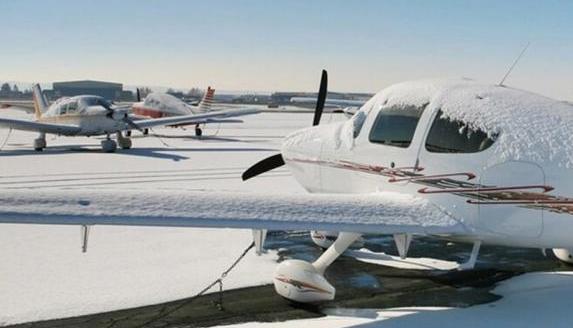
- Icing conditions occur when supercooled water droplets freeze upon contact with an aircraft’s surfaces, leading to the accumulation of ice. These conditions are typically encountered in clouds with temperatures between 0°C (32°F) and -20°C (-4°F).
- Aircraft icing can affect various parts of an aircraft, including the wings, tail, engines, and windshield. Ice accumulation can degrade an aircraft’s performance and handling characteristics.
- The most dangerous types of ice for aircraft are clear ice and rime ice. Clear ice is dense and smooth, forming a clear, hard layer that can disrupt airflow over wings and control surfaces. Rime ice is rough and granular, affecting aerodynamics and potentially damaging engines.
- Icing can lead to reduced lift, increased drag, altered stall characteristics, and degraded control response, making it one of the most hazardous weather-related challenges in aviation.
- Aircraft operating in icing conditions must have anti-icing and de-icing systems to prevent or remove ice accumulation. These systems may include heated surfaces, pneumatic boots, or liquid de-icing systems.
- Pilots are trained to recognize and respond to icing conditions by using weather radar, meteorological information, and onboard sensors. They must also follow specific procedures for activating anti-icing systems and, if necessary, exiting icing conditions.
- Icing conditions can lead to dangerous situations, including loss of control or reduced engine performance. Aircraft must be equipped with comprehensive icing protection systems, and pilots need to be vigilant and proactive in avoiding or escaping such conditions.
- To mitigate risks associated with icing conditions, airlines and aviation authorities have strict protocols and guidelines. Additionally, modern aircraft are equipped with advanced weather radar and icing detection systems to aid in situational awareness and decision-making.
Navigating and managing icing conditions is a complex and challenging aspect of aviation. Ensuring the safety of passengers and crew in the presence of ice accumulation requires the collaboration of experienced pilots, advanced technology, and effective operational procedures.
Critical Phases of Flight (Cruise to Descent)-
The transition from cruise to descent is indeed one of the critical phases of flight that requires careful attention and precise execution. Here’s a brief overview of this stage:
- The cruise phase is characterized by relatively stable flight at a constant altitude and airspeed, often at higher altitudes where the aircraft is operating most efficiently.
- As the aircraft approaches its destination, it must begin the descent phase to descend from its cruising altitude to the desired approach and landing altitude.
- This transition involves several important considerations:
- Altitude Management: Pilots must plan the descent to ensure the aircraft reaches the desired altitude at specific waypoints or altitudes along the approach path. This requires managing engine thrust and descent rate.
- Air Traffic Control: Pilots communicate with air traffic control (ATC) to receive descent clearances and instructions. ATC helps manage the flow of traffic and provides guidance for a safe descent.
- Navigation and Route Planning: Accurate navigation is crucial to follow the correct descent path and arrive at the initial approach fix (IAF) or glide slope intercept point. Pilots must also be aware of airspace restrictions, airways, and waypoints.
- Aircraft Configuration: The aircraft must be configured for descent by adjusting the throttle, extending the spoilers, and lowering the landing gear and flaps as necessary. This ensures a smooth and controlled descent.
- Passenger Comfort: Crews must consider passenger comfort during the descent, making gradual altitude changes and minimizing abrupt pitch and roll movements.
- Weather Conditions: Pilots must monitor weather conditions and be prepared for changes, such as turbulence or adverse weather, which can affect the descent.
- Descent Planning: Planning includes calculating the appropriate descent rate, descent angle, and timing to meet altitude restrictions and the final approach fix.
The transition from cruise to descent is a crucial stage in the flight because it sets the aircraft on the path for the approach and landing. Precise altitude management, communication with ATC, adherence to flight plans, and awareness of weather conditions are essential to ensure a safe and efficient descent. It requires the skill and coordination of the flight crew to navigate this transition successfully.
Oceanic and Remote Operations-
Oceanic and remote operations in aviation represent a challenging and specialized stage of flight. Here’s a brief overview:
- Oceanic and remote operations typically pertain to long-haul flights that traverse vast stretches of open ocean or remote areas with limited or no radar coverage and communication infrastructure.
- These operations often involve routes over the open ocean, polar regions, deserts, or other sparsely populated and inaccessible areas.
- Key challenges in oceanic and remote operations include:
- Communication: Aircraft are often beyond the range of conventional VHF radio communication with air traffic control (ATC). Pilots rely on high-frequency (HF) radio, satellite communication, and data link systems for position reporting and coordination.
- Navigation: Precise navigation is critical, as there are usually fewer navigational aids and ground-based navigation aids may be far apart. Pilots primarily use inertial navigation systems (INS), GPS, and advanced avionics to maintain accurate position information.
- Weather and Turbulence: These regions can experience extreme weather conditions, turbulence, and icing. Pilots must monitor weather forecasts, make route adjustments as needed, and be prepared to encounter challenging weather conditions.
- Fuel Planning: Oceanic and remote flights require extensive fuel planning, considering factors like fuel reserves, alternate airports, and the possibility of having to hold or divert due to unforeseen circumstances.
- Contingency Planning: Given the remote nature of these operations, pilots and airlines must have robust contingency plans for emergencies such as medical issues, mechanical failures, or security threats.
- Search and Rescue: Rapid response in the event of an emergency is challenging due to the vast and remote areas involved. Search and rescue (SAR) coordination and preparedness are critical.
- Aircraft used for oceanic and remote operations are equipped with specialized systems and equipment, including enhanced communication capabilities (such as satellite communications), long-range navigation systems, extended fuel tanks, and improved cold-weather and turbulence mitigation measures.
- Crew training for oceanic and remote operations emphasizes self-sufficiency, resourcefulness, and adherence to standardized procedures. Pilots are trained to handle unique challenges specific to these regions.
Oceanic and remote operations require a high degree of preparation, situational awareness, and adaptability from flight crews. They are considered some of the most complex and demanding flight operations due to the extended duration, potential isolation, and unpredictable environmental conditions encountered during these long-haul flights.
Flight through Turbulence-
Flight through turbulence is one of the most challenging and potentially unsettling stages of flight. Here’s a brief overview:
- Turbulence refers to irregular and often unpredictable changes in air movement that can affect an aircraft’s stability and comfort. Turbulence can result from various factors, including weather, atmospheric conditions, and the wake turbulence created by other aircraft.
- Types of turbulence include clear air turbulence (CAT), which occurs at high altitudes with no visible weather disturbances, and convective turbulence, which is associated with thunderstorms and other weather phenomena.
- Turbulence can vary in intensity, from light bumps that passengers might barely notice to severe turbulence that can cause abrupt and violent aircraft movements.
- Challenges during flight through turbulence include:
- Passenger Comfort: Ensuring the comfort and safety of passengers is a top priority. Crew members may instruct passengers to fasten seatbelts and remain seated during turbulence to prevent injuries.
- Aircraft Handling: Pilots must maintain control of the aircraft during turbulence, making appropriate control inputs to ride out the disturbances and prevent excessive altitude or attitude changes.
- Instrument Interpretation: Pilots rely on onboard instruments to gauge the severity of turbulence and adjust their flying techniques accordingly. This includes using airspeed indicators and altimeters to avoid exceeding aircraft limits.
- Weather Radar and Forecasting: Advanced weather radar and forecasting tools are crucial for detecting and avoiding turbulence. Pilots use these tools to plot routes that minimize exposure to turbulence when possible.
- Modern aircraft are equipped with turbulence-detection systems that provide real-time information on turbulence ahead, helping pilots make informed decisions about adjusting altitude or changing course.
- Crew training includes instruction on turbulence avoidance and management, as well as how to communicate with air traffic control regarding turbulence encounters.
- While turbulence can be uncomfortable, it is generally not a safety concern for well-maintained and operated aircraft. The primary goal is to ensure the safety and comfort of passengers and crew.
Flight through turbulence is considered tricky because it demands a combination of technical skill, situational awareness, and passenger care. Pilots are trained to handle turbulence safely and efficiently, but it remains an inherent challenge in aviation due to its unpredictable nature and the potential for discomfort and anxiety among passengers.
Night Operations-
Night operations in aviation present a unique set of challenges and complexities, making them one of the trickiest stages of flight. Here’s a brief overview:
- Night operations refer to any flight conducted during the hours of darkness, typically defined as the period from sunset to sunrise. Flying at night introduces several challenges:
- Reduced Visibility: Darkness reduces visibility both inside and outside the aircraft. Pilots must rely more on instruments and lighting systems, which can be disorienting.
- Visual Illusions: At night, visual cues may be misleading. Features on the ground, such as lights or stars, can create optical illusions, making it challenging to accurately judge altitude, distance, and motion.
- Fatigue and Circadian Rhythms: Flying at night can disrupt circadian rhythms and increase pilot fatigue, which can affect alertness and decision-making.
- Limited Visual Reference: Over remote or sparsely populated areas, external lights may be scarce, making it challenging to establish visual references, especially during approach and landing.
- Night Vision: Adapting to low light levels takes time, and sudden exposure to bright lights, such as from other aircraft or ground vehicles, can impair night vision.
- Aircraft are equipped with various lighting systems, including navigation lights, anti-collision lights, runway and approach lighting, and cockpit lighting. Proper use of these systems is crucial for maintaining situational awareness.
- Training for night operations includes navigation techniques, instrument flying proficiency, and the ability to adapt to reduced visibility and low light conditions.
- Pilots must also consider night-specific weather phenomena, such as temperature inversions that can lead to fog or haze, which can affect visibility during nighttime approaches.
- Air traffic control procedures may vary at night, including the management of traffic volumes and spacing between aircraft, which can impact the timing and sequencing of approaches and landings.
- Safety in night operations is paramount. Crews must adhere to regulations and standard operating procedures to mitigate the challenges posed by reduced visibility and the potential for human factors like fatigue to affect performance.
Night operations require additional vigilance and attention to detail from both flight crews and air traffic controllers. Proper training, effective use of lighting systems, and adherence to safety protocols are essential to ensure safe and successful flights during the hours of darkness.
Mountainous Terrain Operations-
Operating aircraft in mountainous terrain presents unique and challenging conditions, making it one of the trickiest stages of flight. Here’s a brief overview:
- Mountainous terrain operations involve flying in or near mountain ranges, which are characterized by high elevations, rapidly changing weather, and challenging topography.
- Key challenges and considerations during mountainous terrain operations include:
- High Terrain: Aircraft must operate at higher altitudes, which can reduce engine performance and aircraft capabilities. The thinner air at altitude affects both engine power and lift production, necessitating careful flight planning.
- Turbulence: Mountains can cause turbulent air conditions due to wind interactions with the terrain. Turbulence can affect aircraft stability and passenger comfort.
- Weather Variability: Mountainous areas often experience rapidly changing weather conditions, including localized thunderstorms, fog, icing, and strong winds. Pilots must be prepared to adapt to these changes quickly.
- Limited Navigational Aids: Mountainous regions may have limited ground-based navigational aids, making reliance on onboard navigation systems crucial for maintaining accurate positioning.
- Obstacle Clearance: Pilots must maintain adequate altitude to clear mountain peaks and ridges, especially during ascent and descent. This requires careful altitude management.
- Terrain Awareness: Pilots must have a strong understanding of the topography, including the location of valleys, passes, and emergency landing sites.
- Communication: In remote mountainous areas, communication with air traffic control may be limited. Pilots must be prepared to use alternate communication methods, such as high-frequency (HF) radios, satellite phones, or data link systems.
- Aircraft used in mountainous terrain operations may have specialized equipment, including terrain awareness and warning systems (TAWS), weather radar, and additional engine power for high-altitude performance.
- Crew training is essential for mountainous terrain operations, covering topics such as flight planning, obstacle avoidance, turbulence management, and the use of navigation and communication systems in challenging environments.
- In mountainous terrain, safety is paramount. Proper flight planning, adherence to altitude restrictions, and effective decision-making are critical to mitigate the risks associated with operating in these challenging environments.
Mountainous terrain operations demand a high level of skill, situational awareness, and adaptability from flight crews. Careful preparation and a thorough understanding of the unique challenges presented by mountainous terrain are essential for safe and successful flights in these regions.
Simultaneous Multi-Aircraft Operations-
Simultaneous multi-aircraft operations, where multiple aircraft are in close proximity to each other, represent one of the most complex and potentially tricky stages of flight, particularly in congested airspace or at busy airports. Here’s a brief overview:
- This stage of flight occurs during takeoff, landing, and the initial climb or descent phases when multiple aircraft are sharing the same airspace, runways, and taxiways.
- Challenges during simultaneous multi-aircraft operations include:
- Traffic Separation: Ensuring safe separation between aircraft is a top priority. Air traffic controllers use radar and communication systems to provide instructions and maintain appropriate spacing between aircraft.
- Runway Operations: Efficient use of runways is crucial. At busy airports, simultaneous takeoffs and landings on parallel runways (known as parallel operations) are common. Proper coordination and sequencing are essential to prevent conflicts.
- Taxiway Congestion: Aircraft moving on the ground, especially during peak traffic periods, can create congestion on taxiways and at intersections. Pilots and ground controllers must coordinate movements carefully.
- Communication: Effective communication between pilots and air traffic control is essential for maintaining situational awareness, receiving instructions, and reporting any issues or deviations from the plan.
- Weather Impact: Adverse weather conditions, such as low visibility or strong crosswinds, can further complicate simultaneous multi-aircraft operations, requiring adjustments to procedures and spacing.
- Runway incursions, which occur when an aircraft or vehicle enters an active runway without authorization, are a major safety concern during simultaneous operations. Vigilance and adherence to procedures are essential to prevent runway incursions.
- Modern airports use advanced technology, such as ground surveillance radar and airport surface management systems, to enhance safety and efficiency during simultaneous operations.
- Crews are trained extensively in procedures for operating in busy airspace and on the ground. Pilots and air traffic controllers also participate in ongoing training to ensure that they can manage complex traffic scenarios effectively.
Simultaneous multi-aircraft operations are a critical phase of flight where safety is of paramount importance. The coordination and management of multiple aircraft in close proximity demand meticulous planning, precise execution, and constant vigilance from both flight crews and air traffic controllers to ensure safe and efficient operations.
In conclusion, It’s important to emphasize that pilots undergo extensive training to handle these tricky stages effectively. They follow standard operating procedures, engage in simulator training, and gain experience over time to ensure safe flight operations under various conditions. Additionally, advancements in technology and aviation practices continue to enhance safety during these challenging phases of flight.
